WIP Artist Highlight: Stephanie Santana
When I walk into Stephanie Santana’s studio, I see family. Photographs that travel through time and intertwine with textile.
Stephanie tells me that her practice is in textiles and printmaking, and that she primarily works with cotton and found fabrics.
“I tend to layer a lot of different techniques and work with family and archival photographs from my aunt, because she was a historian and had a wide range of materials that I pull from.”
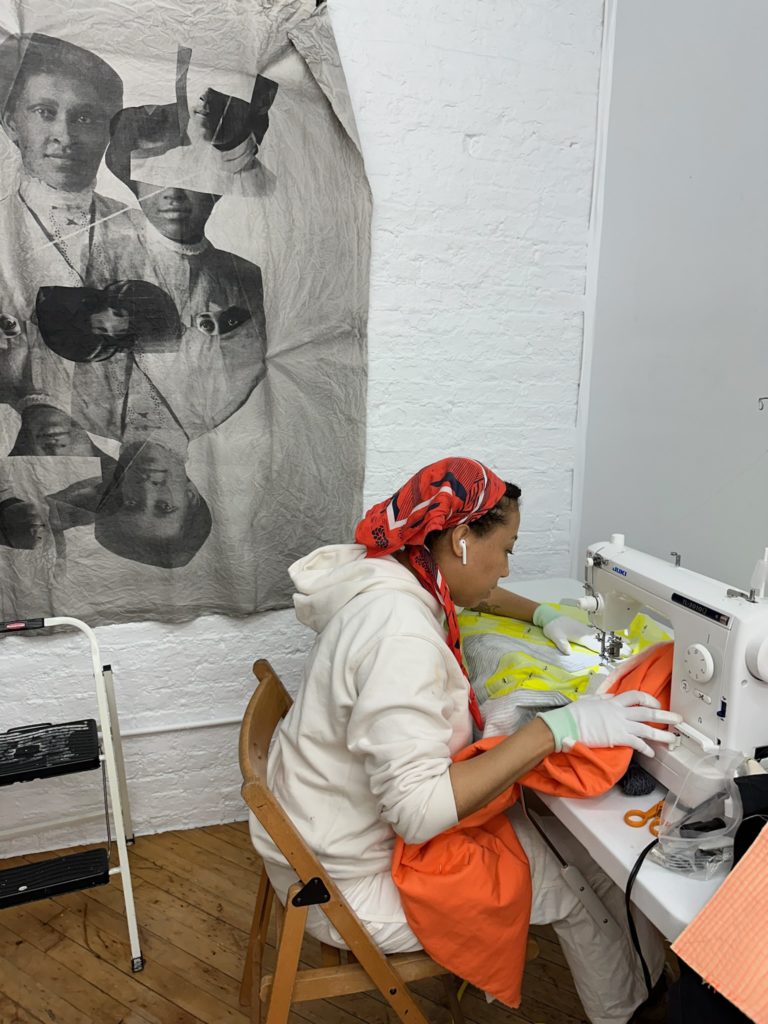
I ask her about how the intersection of photography and textiles came together in her practice.
“It started with me wanting to preserve family history, and more so photographs of my Aunt when she passed away in 2019. I started looking at photographs from her archive, and I was thinking of how I could preserve the photographs. I was working with fibers, so I was thinking of ways to scale up. With textiles themselves, I was always interested in patterns, so I studied textile and surface design at FIT to gain a better understanding of making patterns on fabric by hand. My perspective on screen printing shifted during this time, where I looked at printmaking as a more fine art medium onto fabric.”
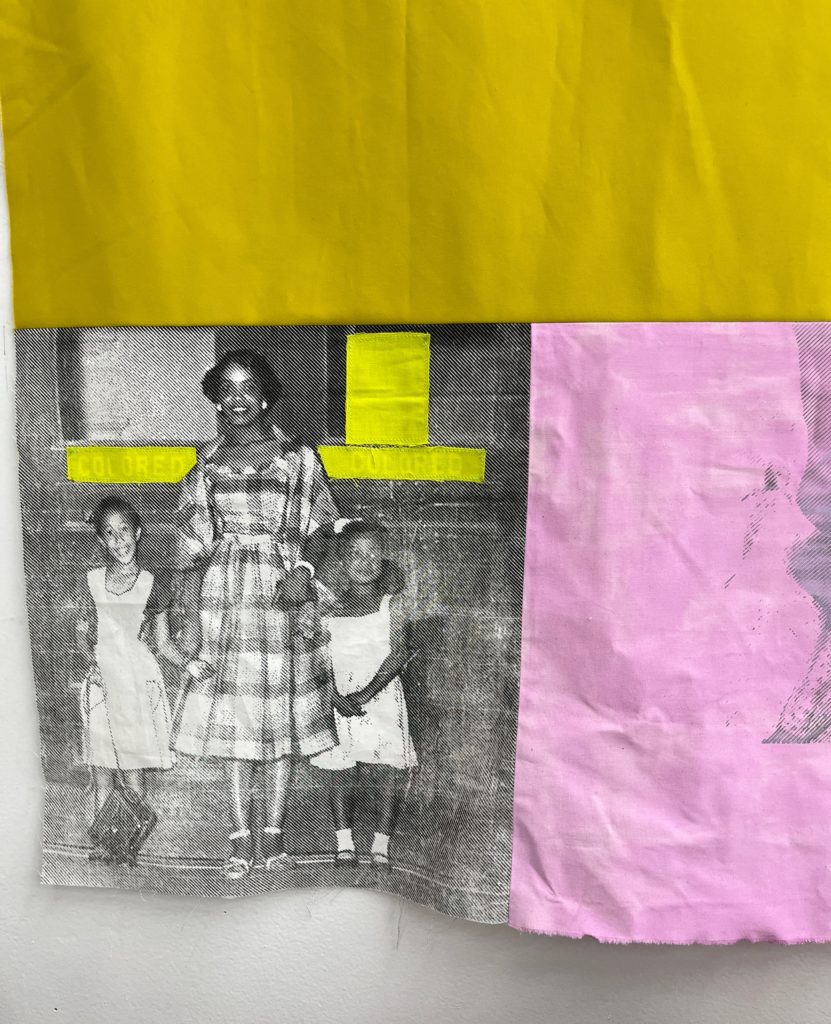
I ask Stephanie about her process with selecting photographs and what goes through archiving in her practice.
She points to a piece with a woman and two little girls on either side.
“This photograph, for example, is of my great aunt, my mother and aunt on either side of her. I grew up seeing this photo a lot, but in general, working with photos is a way to understand them better. But it’s a really intuitive process in terms of selection, perhaps based on the way someone is looking or someone is standing. I’m not necessarily thinking about one particular moment or one particular timeline, but constructing a narrative through time with my own experiences and identity.”
I ask her about her relationship with more present-day photographs for her pieces.
“I’ve started to pull more recent images, but I have a ghost image of my son and I that I used. There’s some photos of my son in my grandparents’ backyard in Texas, which is where my mother and my aunt grew up, so the cyclical aspect of home is something I want to explore with that. I think home is really present in the work, whether it’s how we make a home, how we return to home, or what we do when we physically can’t go back to place.”
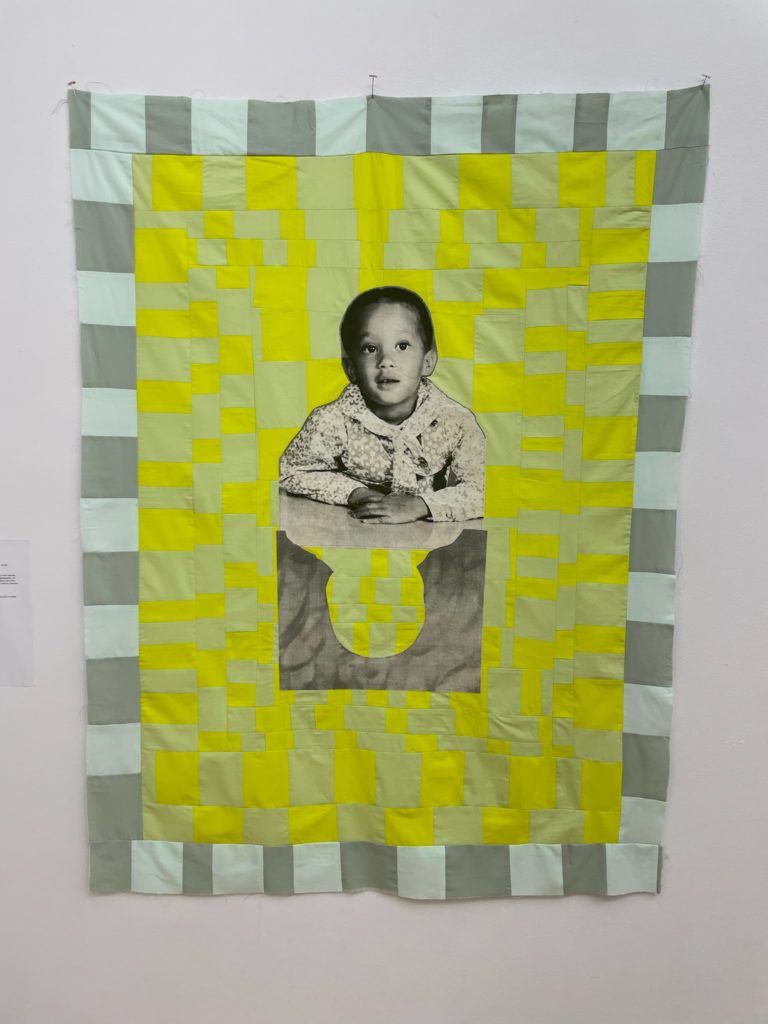
We tap into her process, and how materiality, technique, and thematics each make their way.
“I tend to select photos that I want to work with, print them, and go from there. I explore different expressions of the images I pick. The textile works that I make are unique, even if they have the same image. As I piece things together, the story develops. The theme I’m more so working through now is way-finding, and figuring out how issues now were dealt with in the past. So the exploratory themes of the work makes the general process a lot more free-flowing.”
She pulls up another piece of her Aunt, titled In Search of Sweetness.
“I was thinking a lot about her posture, how contemplative it is in finding joy during difficult times. But it’s also a piece so focused on technique because it was my first time combining fabric and paper. I printed the image on fabric and then I mono printed and cut it out after. So there’s a combination of motifs and the kinds of techniques that come along with them.”
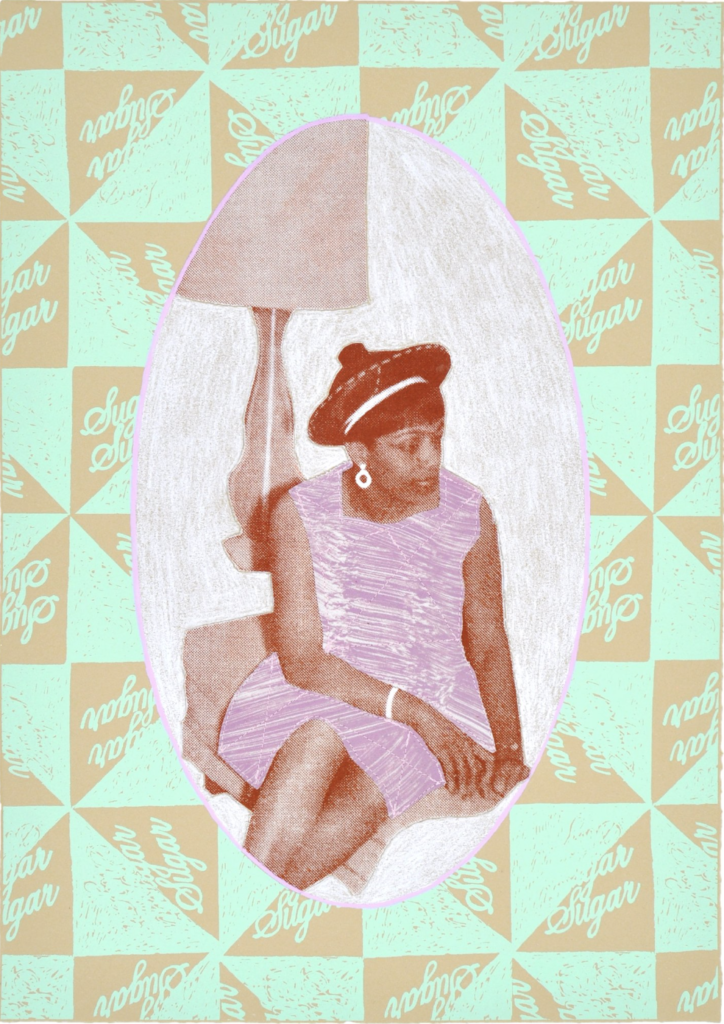
We talk about the relationship of textile and the photographs, in terms of which photograph goes where, and what kind of process that entails.
“When I’m experimenting more with unique materials or techniques, I try to see if deviations come up. I did this series called Ways of Knowing, which are mostly photo transfer and monoprints, so I did monoprints and paired it with the imagery to see what works best. It also comes to what emotion I feel from the print and why a certain image works in that space. Many times, it’s always an exploration to see what new things I can find within a photo that I haven’t seen before.”
With the way Santana describes photographs, my biggest curiosity remains: what’s her personal relationship and history with photography?
“I don’t consider myself a photographer in particular, but I make images. A lot of my family members are photographers. There are a good chunk of images that I work with that were made by my grandfather. But I want to explore the realm of pulling from my own images in the future and seeing what I feel with that.”
I ask her if she’s ever thought of using images that aren’t of her family, particularly any found images.
“If there’s something that connects to a certain theme I’m working on. I feel like my work is now in a mode between painting and collage, so that’s a part of the shift in my work now.”
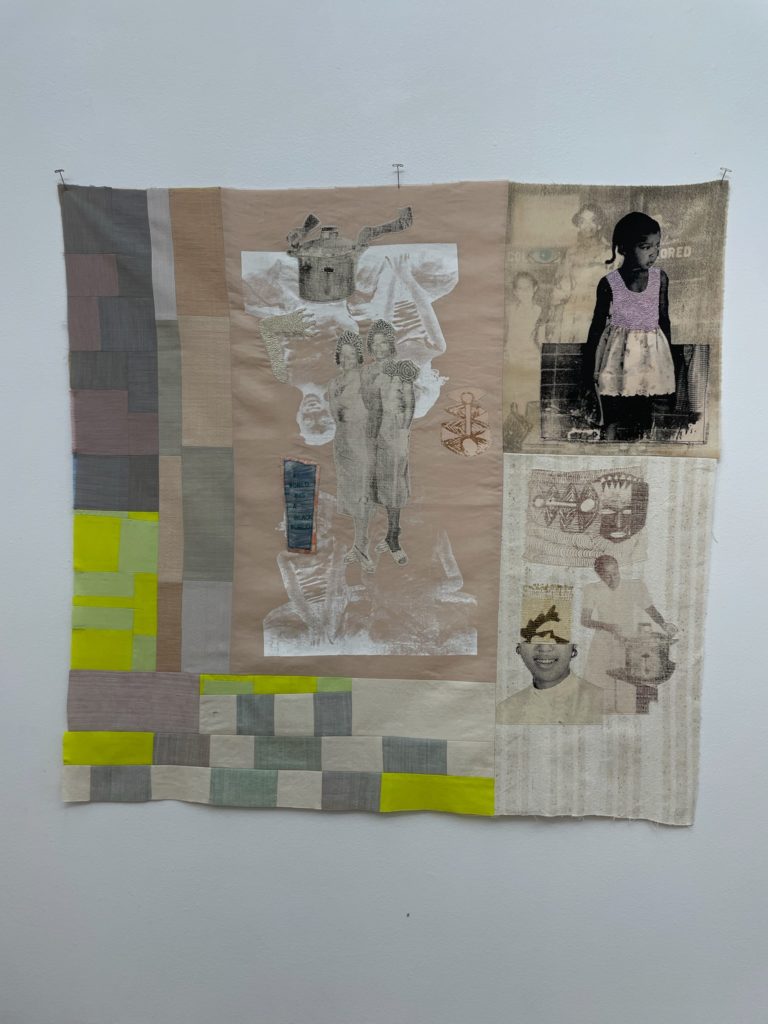
We move onto display, and more so how the evolution of work modes has changed display.
“Specifically dealing with the theme of home, I would want the display to focus on space and how we live in a space. There’s a lot of exploration to do, but so much of what I’m working with is memory based. The memory aspect is very much of my own making, and very mythological, so I would say there’s more to look at in terms of manifesting that into exhibiting.”
Speaking of mythological themes, I ask her about any mythologies that have influenced her work in particular.
“Yeah, I have read quite a bit of Black American folklore since I was young. I’m interested in the archetypal characters that come up as stand-ins to show how we overcome challenges. Alongside that, the anthropological narratives from Zora Neale Hurston, for example, have been an influence.”
We finish up our conversation with what she’s been working on, and what comes next.
“I would say it’s figuring and placing the images together right now, and seeing what kinds of themes come from there. There are definitely elements of self-determination and societal expectations coming up right now. I’m still experimenting with different printmaking techniques, so there’s a new tactile quality that I’m playing around with. There are these unpredictable qualities of printmaking that I want to embrace as I go forward.”